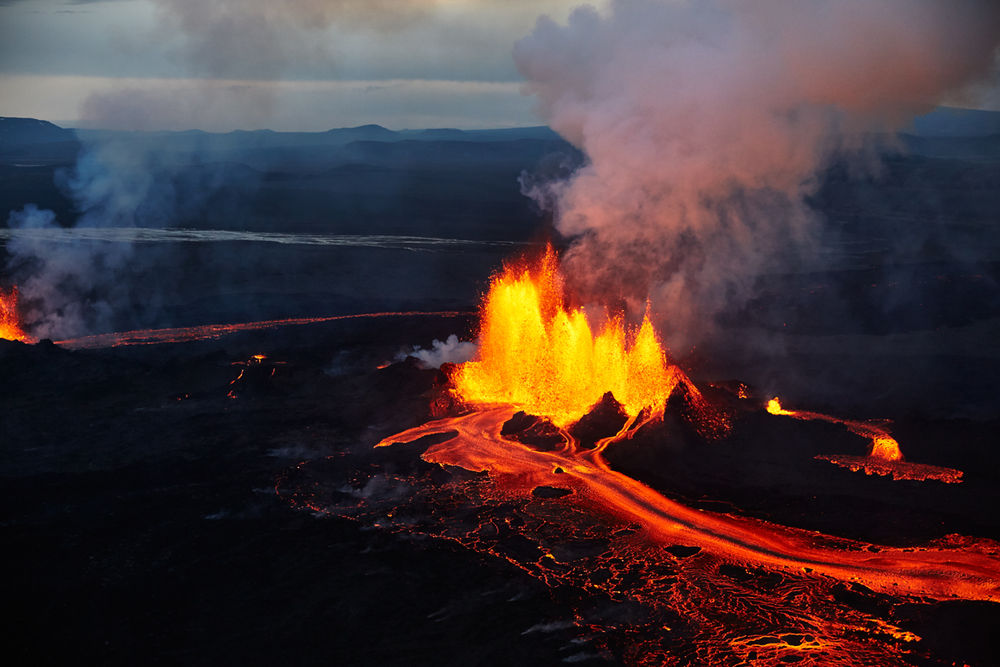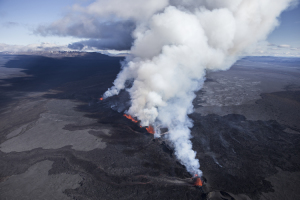As you may or may not know, a volcanic eruption started in late August in the Icelandic highlands. Actually it was on my son’s 6th birthday August 31st. It’s been ongoing ever since and you can actually see it live on webcam here. It hasn’t interrupted our lives at all, since its quite far away, about 110km south from my town Akureyri far away from anything called civilization. Quite fortunate that!
But then it started.
A a few weeks ago we started noticing SO2 pollution from the Volcano. It spews up 20-60 thousand tons of SO2 (Sulfur Dioxade) on a daily basis, compared to the 14K tons emitted by the whole EU daily on total. So with the calm frosty weathers (this time of year we’re dancing around the 0°c degrees) the gas distribution forecast has been even more important than weather forecast. If gas pollution is harsh people are advised to stay indoors, kids wont go out during breaks at school and babies are not put out in strollers while napping and walking outside is ofcourse not advised. It is sometimes viewable as a blue haze but at other times its only sensed as a burning sensation in eyes and throat. My sister shot this video outside her home in the south-east:
On Thursday last week the Civil protection agency sent out 40 thousand SMS messages to people in my area to warn us to stay indoors, turn up the heat (which supposedly increases air pressure and inhibits gas from entering the apartment) and turn off any air conditioning equipment. Its kind of funny to get an SMS being asked to turn up the heat when it’s -5°c outside, like its not on full blast already! 🙂
The gas dispersion can be seen at the Iceland Meteor office website and it looks like we’ll get our share again on Thursday.
In that way the Volcano has had an impact of our lives in a sense that I have a great desire for the cold strong winds straight from the North Pole, to get some fresh air for my youngsters. I’d rather take on the freezing winds than more of this sneaky unhealthy pollution. But with the ongoing earthquakes in the glacier volcano close to the eruption, around 60-100 per day, this situation is likely to continue at least for the next weeks.







